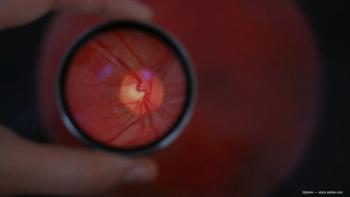
ARMOR surveillance data update shows increased levels of resistance
The latest surveillance data on antibiotic resistance trends show increased levels of resistance among certain isolates, warranting ongoing, prospective, multicenter surveillance studies.
Take-home: The latest surveillance data on antibiotic resistance trends show increased levels of resistance among certain isolates, warranting ongoing, prospective, multicenter surveillance studies.
By Nancy Groves; Reviewed by Mitchell Jackson, MD
Lake Villa, IL-The most recent surveillance data on antibiotic resistance trends show increased levels of drug resistance among Staphylococcus aureus and coagulase-negative staphylococci (CoNS) as well as among isolates of Pseudomonas aeruginosa in test sites across the United States.
Results to date from 2013 were compared with those from 2012 by researchers from Bausch + Lomb. They also reported the first data from clinical sites in Canada.
The Antibiotic Resistance Monitoring in Ocular Microorganisms (ARMOR) surveillance study was initiated in the United States in 2009 to monitor resistance trends among bacterial pathogens of ocular significance. Sites in Canada have also begun participating in the study, and the 2012 to 2013 results will provide baseline data.
To date, 239 isolates from 27 U.S. sites have been subjected to antibiotic susceptibility testing. Broth microdilution susceptibility testing per Clinical and Laboratory Standard Institute methods was performed for up to 16 representative antibiotics. Surveillance results showed that isolates of S. aureus and CoNS were non-susceptible to oxacillin/methicillin (43% to 59%), ciprofloxacin (33% to 43%), clindamycin (21%), and azithromycin (60% to 63%), a slight increase over the previous year. Multi-drug resistance (≥3 drug classes) remained prevalent in S. aureus and CoNS isolates (38% to 39%), especially among methicillin-resistant staphylococci (60% to 81%).
“Although no antibiotics are approved for endophthalmitis prophylaxis, what most surgeons care about is what options are available that can protect our patients from this devastating eye infection,” said Mitchell Jackson, MD, founder and medical director of Jacksoneye, Lake Villa, IL.
Surveillance study findings
“In this study, the MIC90 (minimum inhibitory concentration) for besifloxacin had a number that was statistically equivalent in vitro to vancomycin, which is our go-to drug when everything else fails, whereas other drugs-moxifloxacin and gatifloxacin-were four-fold less potent, and ciprofloxacin was near 100-fold less potent than besifloxacin or vancomycin for all types of S. aureus,” Dr. Jackson said.
For methicillin-resistant S. aureus (MRSA), the MIC90 of besifloxacin was only one-fold less potent than vancomycin, whereas moxifloxacin and gatifloxacin had an MIC90 of 8-fold less potency; all of the other antibiotics tested had an MIC90 of 64 or greater less potency than vancomycin, Dr. Jackson said.
Across the board, for resistance against S. aureus, MRSA, and methicillin-sensitive S. aureus (MSSA), vancomycin and besifloxacin were far better than all other antibiotics, he added. Vancomycin and besifloxacin were also the most potent against S. epidermidis in the study.
The survey also found that compared with 2012, the ciprofloxacin and imipenem non-susceptibility rates for P.aeruginosa more than doubled to 14% and 21%, respectively; no resistance was detected in Haemophilus influenzae.
“The problem with most topical fourth-generation fluoroquinolones is their minimal coverage for gram negative bacteria such as Pseudomonas. The good news is that besifloxacin’s MIC90 value for P.aeruginosa was only slightly lower than that of ciprofloxacin, which is considered the most effective fluoroquinolone against this isolate,” Dr. Jackson said.
Non-susceptibility to penicillin remained steady at 6% among Streptococcus pneumoniae, while the rates for azithromycin and imipenem decreased to 29% and 6%, respectively.
Continued need for monitoring
Looking at the overall profile resulting from the latest surveillance data from the United States, Dr. Jackson commented that continued monitoring of antibiotic susceptibility is necessary because of high levels of multi-drug resistance.
“We need to determine whether changes among ocular pathogens reflect annual fluctuations, sampling variations, or true trends in resistance patterns,” he said.
He added that although ocular use of antibiotics is only a sliver compared to their use in systemic treatment, veterinary medicine, and/or agriculture, the prospect of a patient developing a vision-threatening condition such as endophthalmitis justifies judicious use of ocular antibiotics and ongoing, prospective surveillance.
The surveillance study in Canada collected 180 clinical isolates from patients with ocular infections at seven geographically distributed sites. Isolates included S. aureus, CoNS, P. aeruginosa, H. influenzae, and S. pneumoniae.
Canadian findings
In Canada, resistance among the staphylococci was highest for azithromycin (45% to 51%), oxacillin/methicillin (14% to 42%), and ciprofloxacin (29% to 33%). Among the fluoroquinolones, besifloxacin had the lowest MIC90 values (1 mcg/ml for S. aureus, 0.5 mcg/ml for CoNS). These rates were equal to or more potent than that of vancomycin.
In addition, more than 21% of the S. aureus isolates and more than 43% of the CoNS isolates were non-susceptible to three or more drug classes. Methicillin-resistant isolates of S. aureus (MRSA) and CoNS (MRCoNS) were predominantly multi-drug resistant (89% to 92%).
The Canadian findings showed that among S. pneumoniae isolates, 32% were resistant to azithromycin and 16% were non-susceptible to imipenem, yet all were susceptible to the fluoroquinolones, ceftriaxone, chloramphenicol, and penicillin.
One H. influenzae isolate was non-susceptible to fluoroquinolones, and another showed intermediate resistance to chloramphenicol. No resistance was detected among the P. aeruginosa isolates.
“In summary, the ARMOR surveillance data is significant in that it is showing increased levels of drug resistance among the already problematic staphylococci isolates for ophthalmic surgery,” Dr. Jackson said. “The good news is that besifloxacin in vitro has shown similar potency to that of vancomycin in this category of infection.”
Mitchell Jackson, MD
P: 847/356-0700
Dr. Jackson is a consultant with Bausch + Lomb. A poster on the U.S. ARMOR study was presented by Christine M. Sanfilippo, PhD, et al. at the 2014 annual meeting of the Association for Research in Vision and Ophthalmology. Joseph M. Blondeau, PhD, et al. authored the report on the first Canadian surveillance study.
Newsletter
Don’t miss out—get Ophthalmology Times updates on the latest clinical advancements and expert interviews, straight to your inbox.









































